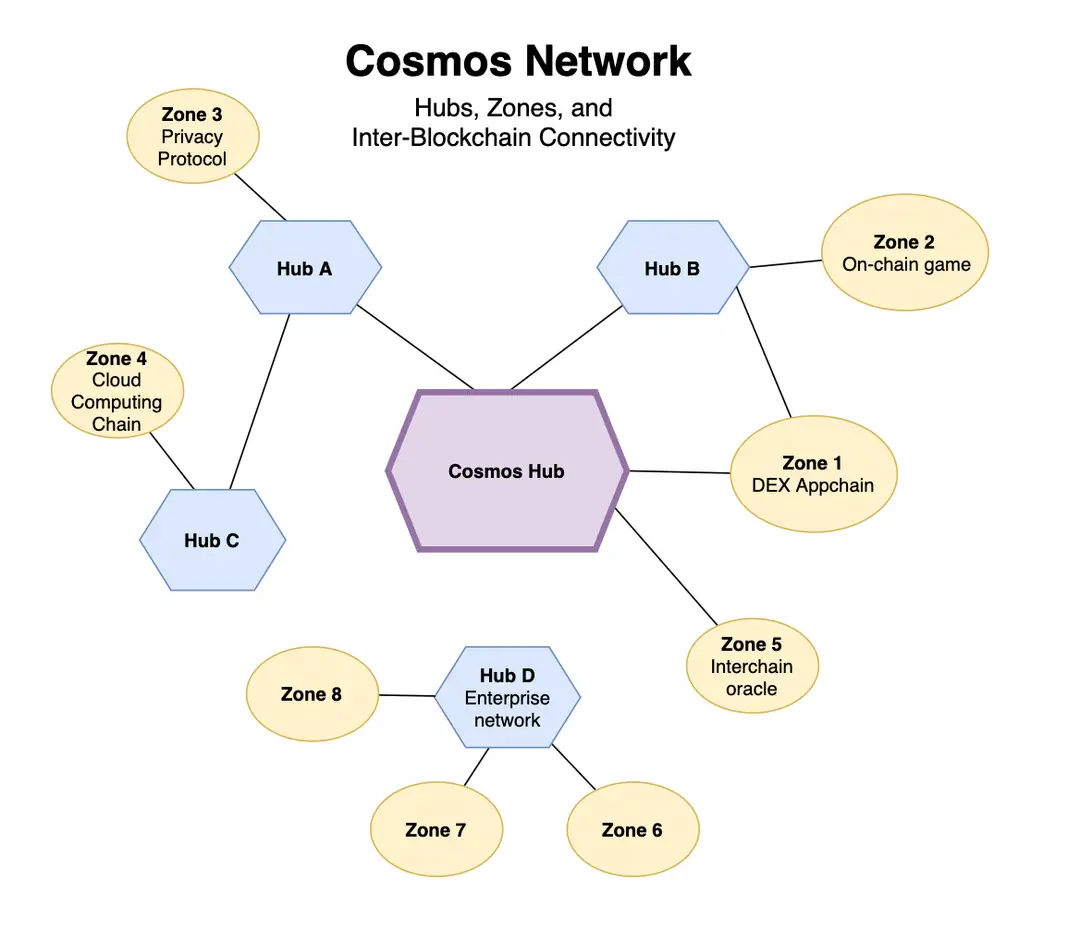Welcome to the Web3 world, where cryptocurrencies, blockchain, and a unique culture converge. Entering the world of Web3 can be both thrilling and overwhelming, especially when faced with the seemingly cryptic language used by enthusiasts. Don't worry if you feel they sound like some secret codes; we are here to unravel their meaning in Web3 context. In this article, we are going to introduce: [Appchain].
In the context of Web3, an Appchain refers to an application-specific blockchain. Unlike general-purpose blockchains like Ethereum, which support a wide range of decentralized applications (dApps), an Appchain is designed and optimized for a particular application or set of applications. This focused approach allows for greater customization, performance optimization, and security enhancements tailored to the specific needs of the application. Appchains provide developers with the flexibility to implement custom features, governance models, and economic incentives that align closely with their application's requirements. By operating as independent blockchains, Appchains can also achieve scalability and efficiency that might be challenging on more generalized platforms.
The concept of Appchains emerged as developers recognized the limitations of building complex applications on general-purpose blockchains. While platforms like Ethereum offer flexibility, they also come with constraints in terms of scalability, transaction costs, and performance. To address these issues, the idea of creating dedicated blockchains for specific applications was developed.
Appchains gained popularity with the advent of blockchain ecosystems like Cosmos and Polkadot, which facilitate the creation of interoperable, application-specific blockchains. These ecosystems provide the underlying infrastructure and tools needed to develop and connect Appchains, fostering innovation and scalability.
How Appchains Work in Web3
Customization and Optimization
Basic Description: Appchains allow developers to customize and optimize the blockchain environment to suit the specific needs of their application. This includes tailoring consensus mechanisms, governance structures, and transaction processing.
Examples: A gaming Appchain might implement fast finality consensus to ensure quick and seamless gameplay, while a DeFi Appchain might focus on robust security measures to protect financial transactions.
Advantages: Greater control over the blockchain's behavior and performance. Ability to implement custom features and optimizations specific to the application.
Challenges: Requires significant development effort and expertise. Ensuring interoperability with other blockchains can be complex.
Scalability and Performance
Basic Description: By focusing on a single application or a set of related applications, Appchains can achieve higher scalability and performance compared to general-purpose blockchains. They avoid the congestion and high fees often seen on shared platforms.
Examples: An Appchain dedicated to a high-frequency trading platform can optimize for low latency and high throughput, ensuring efficient trade execution without being affected by unrelated transactions.
Advantages: Enhanced scalability and performance tailored to the application's requirements. Reduced congestion and lower transaction costs.
Challenges: Balancing performance with security and decentralization. Ensuring the Appchain can handle peak loads and scale as the application grows.
Interoperability and Integration
Basic Description: Appchains often need to interact with other blockchains and external systems. Interoperability protocols and tools enable these interactions, allowing Appchains to leverage the broader blockchain ecosystem.
Examples: Cosmos SDK and Polkadot Substrate provide frameworks for building interoperable Appchains. These platforms facilitate communication between Appchains and other blockchains within their ecosystems.
Advantages: Ability to integrate with other blockchains and access a wider range of services and assets. Enhanced flexibility and functionality through cross-chain interactions.
Challenges: Ensuring secure and reliable interoperability. Managing the complexity of cross-chain communication and data exchange.
Challenges and Future Directions
While Appchains offer numerous benefits and enable powerful, application-specific blockchain solutions, they are not without challenges. One major issue is the development complexity and resource requirements for creating and maintaining an Appchain. This can be a barrier for smaller teams or projects with limited resources.
Ensuring security and robustness in a dedicated blockchain environment is another critical challenge. Appchains must implement rigorous security measures to protect against vulnerabilities and attacks, which can be resource-intensive.
Future directions for Appchains include the development of more user-friendly tools and frameworks to simplify the creation and management of application-specific blockchains. Enhanced interoperability solutions will also play a crucial role, enabling Appchains to seamlessly integrate with other blockchains and the broader Web3 ecosystem.
Appchains represent a significant innovation in the Web3 space, offering tailored, high-performance blockchain solutions for specific applications. By understanding how Appchains work and the opportunities they present, developers can build more robust and efficient decentralized applications.

